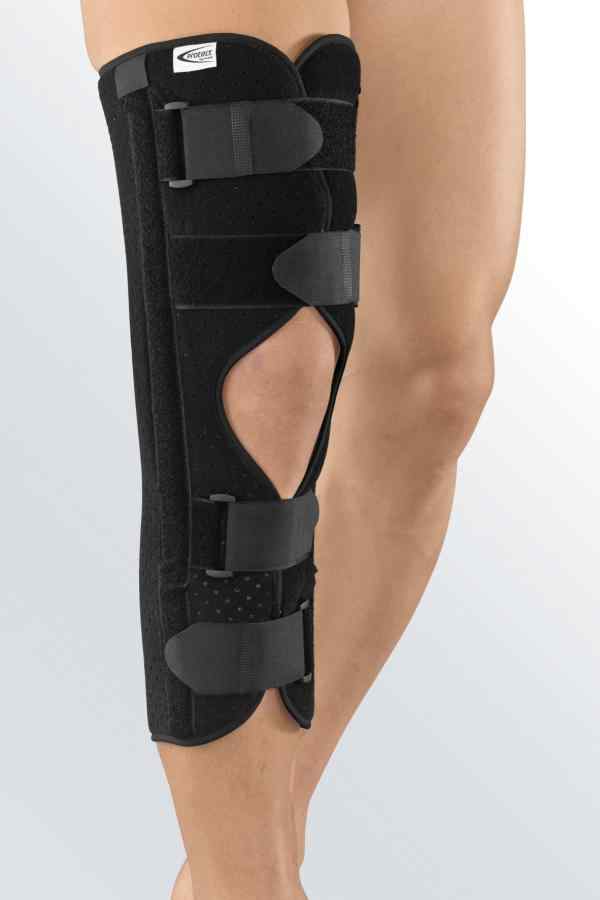A knee brace is used to provide support to the knee, avoid injury, and provide extra stability during the knee’s healing process. The pair is very beneficial to a recovering knee as it keeps the knee immobile when necessary and only allows restricted movement as instructed by a doctor.
A knee that has recently undergone a surgical procedure will benefit the most from braces during its healing process. Even after the knee has healed, the prop will help protect the knee from further damage. Knee braces can also serve various functions in knee correction therapy.
The various functions that require braces include:

#1. Patellar(Knee cap) Dislocation
Have you recently suffered a dislocated kneecap? A pair recommended by a doctor can help keep the kneecap in the right place when you are running, walking, swimming, or performing any sporting activity. A special brace called a Patella Control Brace can be used to control this condition.
#2. Anterior Cruciate Ligament Sprain
A brace may help stabilize the knee joint when your knee has undergone surgery like a meniscus repair. Immediately after surgery, a Bledsoe brace should be worn to assist in the healing process. After the knee has healed considerably, a prop that stabilizes motion should be worn during any athletic activity or any other rigorous movement.
#3. Fracture
When you suffer a fracture on your knee, you will need a knee brace. The brace can be used instead of a cast. While a cast completely restricts movement, a pair will allow for minimal motion as the healing process takes place. A knee immobilizer is a typical brace that will be used for this condition.
#4. Patellar Tendonitis and Chondromalacia Patellae (CMP)
Patellar Tendonitis is also known as jumper’s knee injury because it’s an injury mostly susceptible to jumping sports and activities. Those sportsmen and women who play basketball, volleyball, netball, handball, long jump, among other games that require jumping, are prone to the jumpers’ knee injury. However, even an ordinary individual who isn’t athletic can get this injury.
This type of injury can recover on its own if proper measures are taken. Most of the time, though, stress to the knee joint complicates the condition further. Many doctors recommend rest when dealing with Patellar Tendonitis.
Jumpers Knee Injury can be avoided if necessary precautions such as rest and use of braces are taken. Knee braces will help the situation, especially for athletes and active people who get restless just lying about.
#5. Arthritis
Individuals who have knee arthritis or osteoarthritis will benefit from the use of an OA adjuster brace. The brace helps by taking pressure off the affected part of the joint and relieves the pain. The knee brace gives you extra confidence when you stand or move around if you feel that your knee will buckle when you put weight on it.
The breakdown of cartilage causes osteoarthritis. Cartilages are the cushioning materials that cover both ends of the joints.
The braces that are best for arthritis management include web braces, unloader braces, and sleeve braces.
Our Knee Force blog highlights the best brands of knee braces that can help with your arthritis.
#6. Iliotibial (IT)Band Stress Syndrome
This knee complication causes pain in the outer side of the knee. The IT Band syndrome is caused by activities that require frequent bending of the knee, such as running, long-distance walking, hiking, and biking.
In some instances, you can avoid getting the IT band if you observe caution when exercising by using the right training techniques and using the required training surfaces. Also, if you walk or run by rotating your ankle or leg inward, you are at a very high risk of having the IT band.
But there are unavoidable physical conditions that can also make your chances of getting Iliotibial Band Stress Syndrome higher. If you have bowed legs, knee arthritis, a leg that’s longer than the other, or experience weakness in your glutes, abs, and hip muscles, you are more susceptible to IT Band Syndrome.
A Cho Pat knee brace can help compress the IT Band, where it collides with your shin, therefore, decreasing the frictional forces.
To avoid getting knee injuries during training, consider these factors.
#i. You should do enough warm-ups, cooldowns, and stretches after each training session.
#ii. It would be best if you didn’t push too hard or train for too long.
#iii. You should have enough rest between workouts.
#iv. Ensure you have the right shoes for your training. Putting on worn-out sneakers during a training session will alleviate the problem.
#v. Avoid running on one side of the road for too long. Most streets slope towards the curb. Therefore the surface is uneven, making you at risk of IT band Syndrome or many other injuries to the knee.
#vi. It would be best if you tried to train on a flat surface. However, most training fields are slightly banked. Therefore the runners risk developing IT Band Syndrome and other knee injuries.
Conclusion
Not only sporting injuries require you to wear braces. Other physical conditions may require the use of knee braces to help with movement. Whether you are an active and sporty person or you just need help moving around and relieving pain, you can use knee braces.
Apart from contributing to your healing process, they are the ideal help as you seek further assistance with your knee problem.






